Heading out the door? Read this article on the new Outside+ app available now on iOS devices for members! Download the app.
To help you enjoy fresh home-grown produce this summer, we turned to experts in organic gardening and healthy cooking for advice on selecting the right plants, nurturing them in the ground, and incorporating them into delicious recipes.
What’s better than a meal you’ve cooked? One you’ve grown! A home garden not only saves money, it also reduces your carbon footprint and, when eaten fresh, delivers more nutrients. For instance, tomatoes, lettuce, and carrots can lose up to 7o percent of their vitamin C from harvest to restaurant, finds one study from Brazil. Avoid chemical pesticides and you’ll likely reap even more nutritional benefit: Organically grown eggplant has more calcium, potassium, and magnesium than its conventional counterpart, according to a study in the Journal of Agricultural and Food Chemistry, while organic tomatoes have more vitamin C and carotenoids than nonorganic ones, finds research from France.
To help you plant a tasty garden, including Ayurvedic ingredients to balance your dosha, we tapped The Ayurvedic Institute and experts at Lake Austin Spa Resort in Texas, where much of the food is grown organically by director of flora and fauna Trisha Shirey, author of Vegetable Gardening in the Southwest. Then, use your harvest in the recipes, developed by the resort’s executive chef Stéphane Beaucamp, whose philosophy is simple—eat fresh, real, seasonal food. This summer’s forecast: delicious, healthy, and soothing.
See also Home Gardening: How to Grow Your Own Tea
Plant Your Gourmet Garden
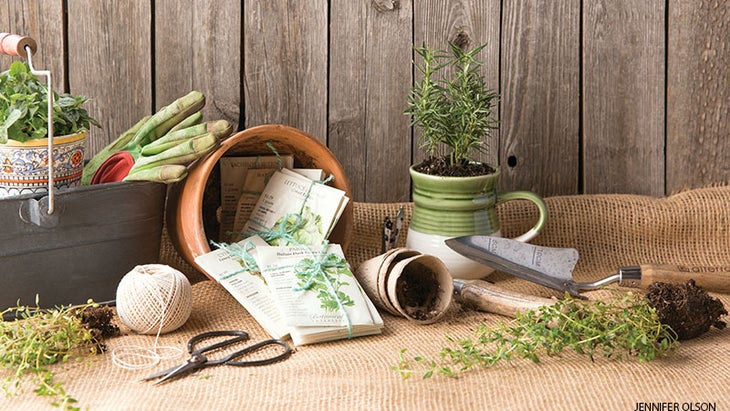
You can grow the plants below in containers or a plot. Containers should be at least 12 inches deep by ⅓ to ½ the height of the mature plant in width. Container-grown veggies need more nourishment than those in the ground, where they naturally get minerals and other nutrients. For container gardening:
- Mix up a fertile soil. Combine 1 part compost with 5 parts vegetable potting soil, then top with additional compost. “Compost helps keep the soil moist,” says Shirey.
- Use organic vegetable fertilizer. It slows drainage, adds nutrients, and keeps nitrogen levels lower so edibles can bloom. Look for vegetable-formulated fertilizers that are CDFA or OMRI certified—Shirey uses Maxicrop seaweed.
- Top with mulch. Once your plant begins to sprout and the weather warms, cover soil with 2–3 inches of mulch to keep it moist. But wait until you see green—mulch too early and the soil, blanketed by mulch, may not warm up.
- Monitor moisture. Containers dry out in hot temps; check often. Avoid overwatering or standing water.
See also 5 Creative Upcycled Planter Ideas
Start from transplants: Tomatoes
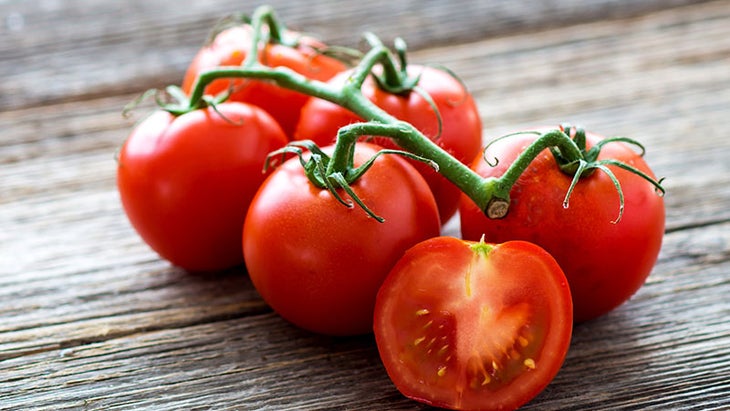
These are tricky to germinate and may not sprout in time for a summer feast. Gradually introduce your transplants to sun. “Transplants have likely just come from a greenhouse and can get sunburned and dried out if exposed to full sun or windy conditions for too long,” Shirey says.
Health benefits: One cup of chopped, fresh tomatoes yields one-third of your daily vitamins C and A. You also get lycopene, a heart helper.
To best absorb the lycopene, cook tomatoes on low (190°) for at least several minutes and consume with a healthy fat, such as olive oil.
When to plant: After frost risk has passed. If temps dip below 50°, cover with polyester floating row covers or bring indoors.
Look for: A “determinate type,” which won’t outgrow the pot.
Feeding: Six-plus hours of sun and good air circulation are key—the plant pollinates itself via wind. Water frequently and consistently.
Make:Caponata Bruschetta
Start from transplants: Parsley
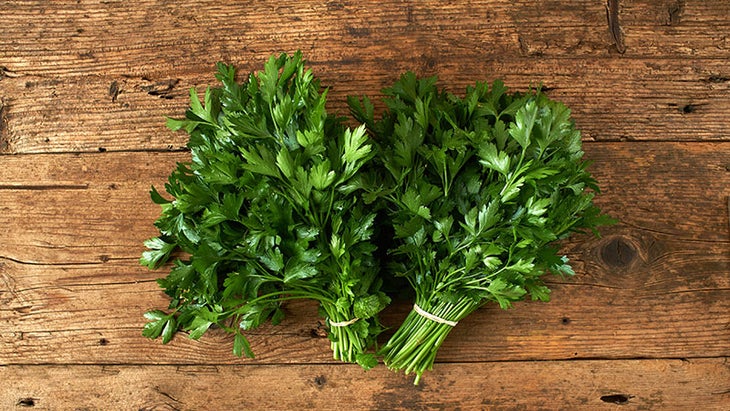
Health benefits: Parsley has blood-enriching iron and vitamin K, as well as vitamin C and heart-helping folate. One cup gives you 133 percent of your day’s needs for C, and nearly 25 percent of your folate and iron.
When to plant: Parsley does well in cool and even cold weather, so plant any time.
Look for: Transplants that have been thinned. If it’s too “bushy,” it’s probably 20 seedlings planted too close together to thrive. Tip: Separate a thick transplant into several containers or one large one, with 12–15 inches between clumps.
Feeding: Needs at least 3 hours of daily sun, but welcomes afternoon shade. Water when soil is dry 1 inch down; don’t overwater, which can cause rot.
See alsoThe Best Herbs for Your Dosha
Start from seeds: Fennel
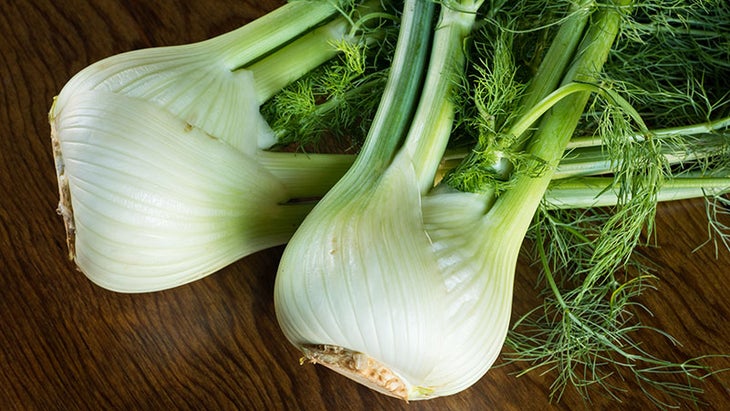
These three plants are super-easy to grow from seeds—perfect for beginners!
Health benefits: Boasts nearly 3 grams of fiber per cup; a good source of potassium (supports muscle contraction).
When to plant: Fennel prefers cool weather; plant when temps hit 36°—anything lower can be detrimental. Seeds germinate best at about 60°. Plant seeds about 4 inches apart, 2 inches deep.
Look for: Seeds for fennel bulb (Florence fennel, a.k.a. finnochio) not fennel herb, which produces the seed used for spices.
Feeding: A half-day of sun (or full day filtered) and afternoon shade; water regularly, but don’t waterlog—allow water to run out of the pot. If you use a saucer, don’t leave standing water.
Make: Fennel Salsa
Start from seeds: Scallions

Health Benefits: Scallions (a.k.a. green onions) are Mother Nature’s multivitamin, delivering calcium, potassium, folate, and vitamins A, C, and K.
When to plant: They do best in cool weather, spring or fall, when nighttime temps are around 45°. Plant seeds a half inch deep, 1 to 1½ inches apart.
Look for: McCoy’s or Evergreen White Bunching types, which don’t form bulbs and keep producing green onions—
a perennial source if temps stay warm (they die in summer and reappear in fall).
Feeding: Sprinkle coffee grounds on the soil every 2–3 weeks in addition to fertilizer at planting time for a nitrogen boost. Place where they’ll get half-day sun/shade. Water regularly, but err on the side of dry.
Start from seeds: Nasturtium
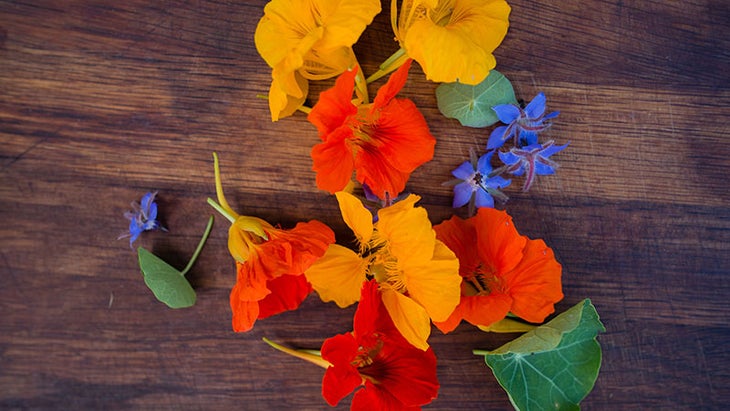
Health benefits: Contains cancer-fighting anthocyanins; the richer the color, the more they deliver, so favor red and orange petals.
When to plant: Just after your last hard frost (if it dips below 30° for several nights, protect with a polyester cover or bring indoors). Sow seeds about ½ inch in soil 10 inches apart.
Look for: Dwarf types if you’re using containers; climbing types do nicely on a trellis or even in a pot placed up high from which they can cascade down a wall.
Feeding: It does well in partial sun/shade. If you’re using containers, water frequently. In the ground, err on the side of dry: Stick your fingertip 2 inches deep—if you don’t detect moisture, go ahead and water.
Make: Nasturtium Pesto